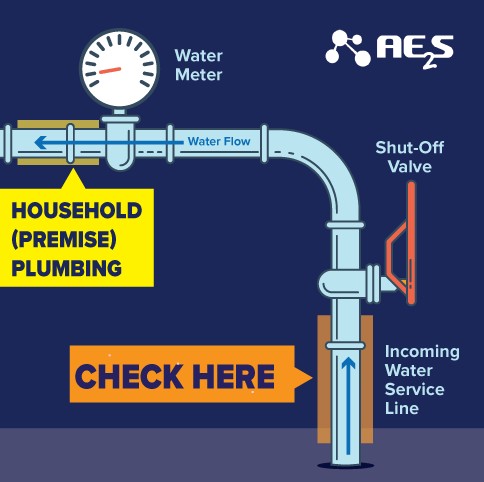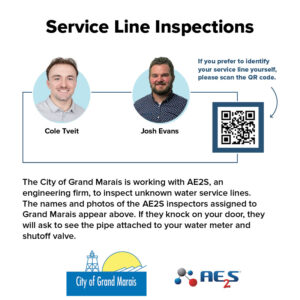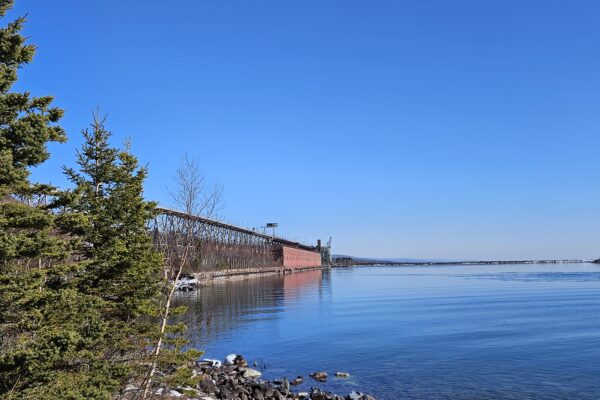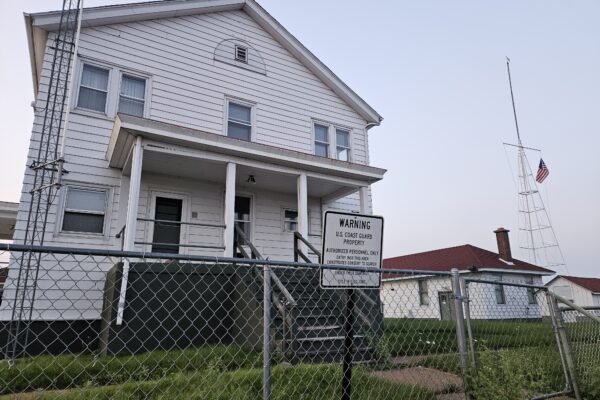Grand Marais launches water service line inventory to identify potential lead pipes
The City of Grand Marais is working with the engineering firm AE2S to conduct a comprehensive water service line inventory of homes and businesses, identifying all pipe materials within the city’s drinking water infrastructure.
The initiative, which began in late August, is a part of a national effort coordinated by the U.S. Environmental Protection Agency (EPA) and assisted on the state level by the Minnesota Department of Health to identify lead pipes in homes and businesses.
A service line is the pipe connecting the water main to the interior plumbing in a building. As part of the inventory project, two AE2S inspectors are conducting door-to-door inspections at homes and businesses to document water service lines.
Home and business owners have the option to perform their own inspection and complete a short online survey. The survey requires respondents to upload a photo of the pipe attached to their shutoff valve and water meter. Find the survey here.
Since the initiative began in Grand Marais in late August, Scott Warner, superintendent of the Grand Marais wastewater treatment facility, said “there have been no lead service lines found” during the inventory process.
However, he said, “The inventory is still young.”
The service line inventory project is expected to wrap up at the end of September.
If lead pipes are found in a home or business, Warner said there are grant opportunities available for home or business owners. The city will share information on how to access the grants with individuals.
To complete the water service line project, the City of Grand Marais received grant funding to hire AE2S. Warner said the water service line project is separate from the ongoing discussions amongst city officials to conduct needed upgrades to the wastewater treatment facility.
There are an estimated 9.2 million lead service lines that supply water to homes and businesses across the United States, according to the EPA. To reduce the number of lead pipes across the nation, the EPA launched a Get the Lead Out (GLO) initiative to provide access to funding and other resources for communities to remove lead pipes in water infrastructure. The State of Minnesota has also set a goal to replace all lead service lines by 2033.















